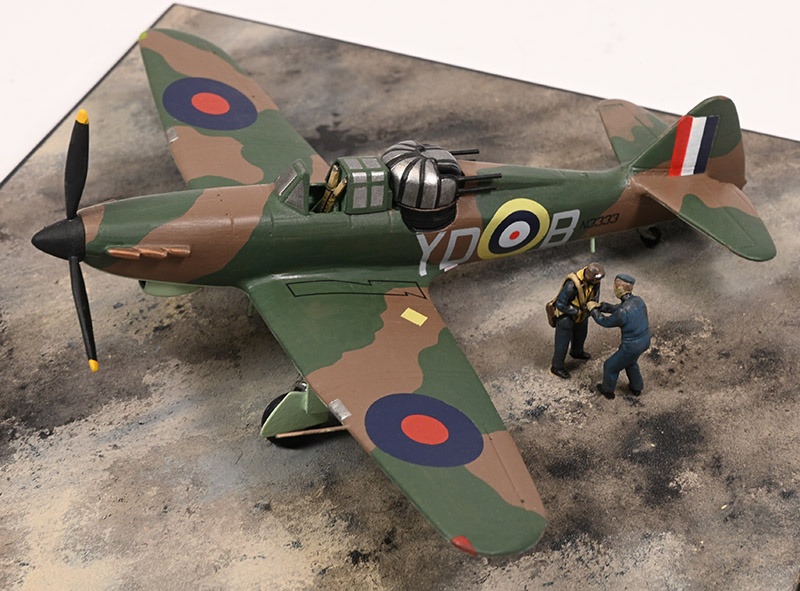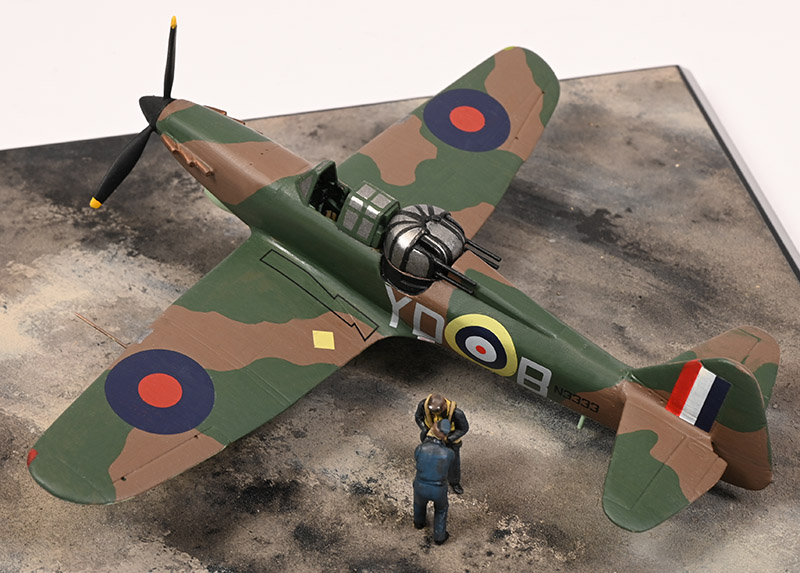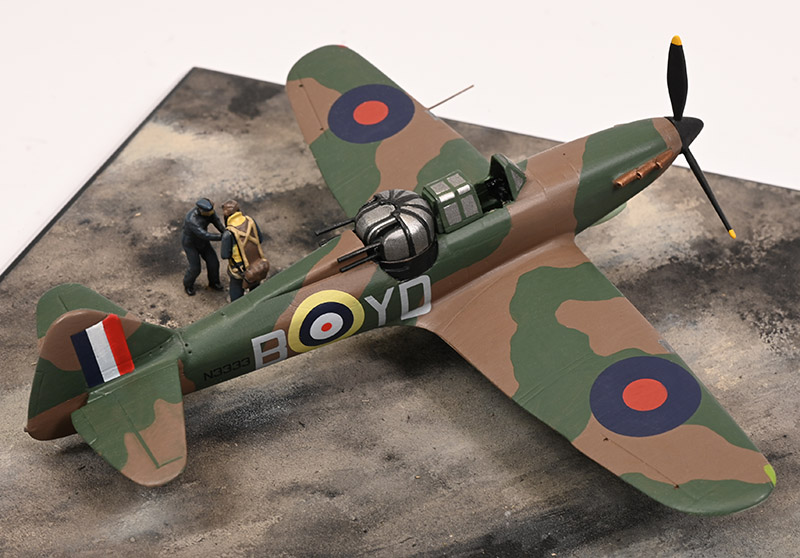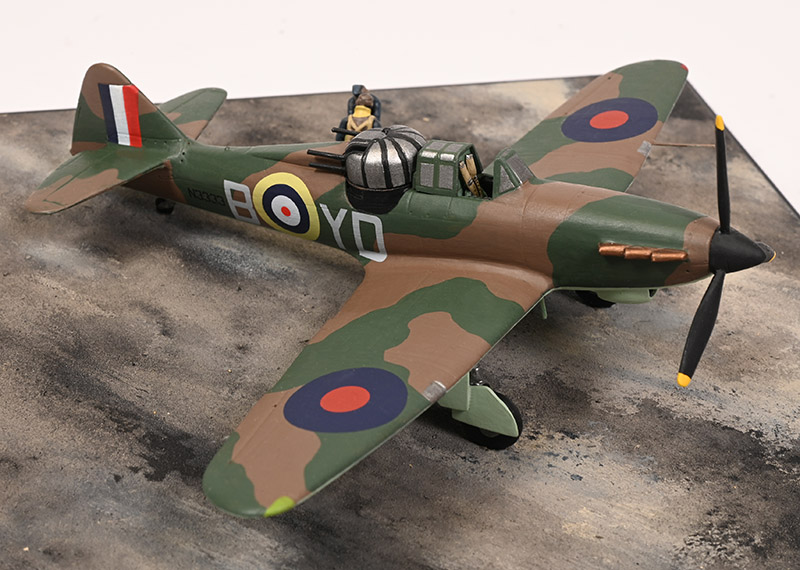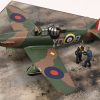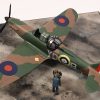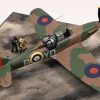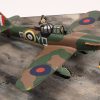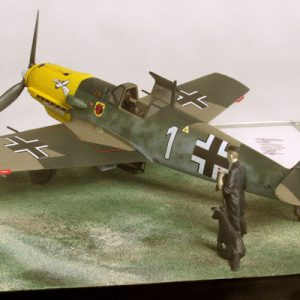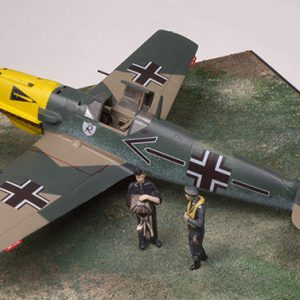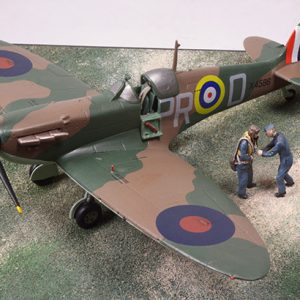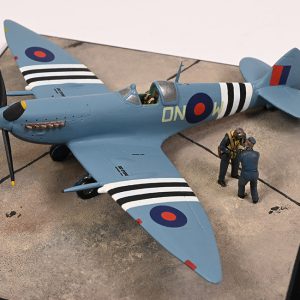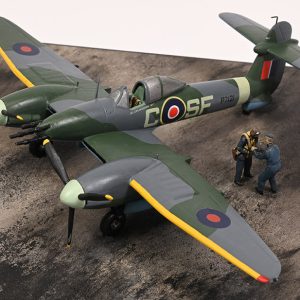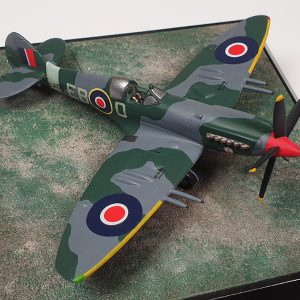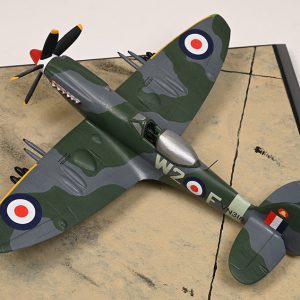Boulton Paul Defiant Mk I, N3333, YD-B
255 Squadron, Flight Lieutenant Arthur Ballantine, Kirton in Lindsey, England, January 1941.
Boulton Paul, having been focused on turret-equipped aircraft for some time, decided to make a submission for Air Ministry Specification F.9/35; their design was given the company name of P.82. The proposed fighter was similar in size and appearance to the more conventional Hawker Hurricane, differing in weight primarily due to the use of turret-based armaments. The central feature of the P.82 was its four-gun turret, based on a design by French aviation company Societe d’Applications des Machines Motrices (SAMM), which had been licensed by Boulton Paul.
In 1937, the first P.82 prototype, K8310, was rolled out. Furnished with a 1,030 hp (768 kW) Rolls-Royce Merlin I and initially lacking its turret, the aircraft bore a great resemblance to the contemporary Hawker Hurricane, although it was at least 1,500 pounds (680 kg) heavier. On 11th August 1937, K8310, which had recently received the name Defiant, conducted its maiden flight piloted by Boulton Paul’s chief test pilot Cecil Feather. Official acceptance trials did not commence until nine months later. On 30th July 1939, the second prototype, K8620, equipped with a Merlin II engine and a full turret, conducted its first flight. K8620 received various modifications over the first prototype, such as telescopic radio masts and revisions to the canopy and undercarriage fairing plates. Powered by the Rolls Royce Merlin 3 engine, the production version of the Defiant Mk I was fitted with a Boulton Paul ‘A’ Mk 2D turret with 600 rounds per gun.
Of the three low-winged monoplane fighters of the Battle of Britain era, the Boulton Paul Defiant Mk I is the one least remembered. Initially Defiants were plagued with engine and undercarriage failures and were grounded until late February 1940. The Dunkirk evacuation, codenamed Operation Dynamo, between 26th May and 4th June 1940, was one of the high points of the Defiant’s career. On May 29th they claimed 37 German aircraft (19 Ju 87s, 15 Bf 110s, 2 Bf 109s and a Ju 88). This was largely due to the confusion of the enemy attacking the Defiants as if they were Hurricanes. It would not take long for the Luftwaffe to learn from their mistake and exploit the lack of forward firing machine guns of the Defiant and its vulnerable underside. Later in the war, Defiants were to gain success as night fighters before being relegated to target tug duties.
255 Squadron served in the night fighter role throughout the Second World War, first in a home based defensive role, then in North Africa and Sicily and finally as a night intruder squadron operating over the Balkans. The squadron became operational as a night fighter unit on 5th January 1941, but due to snow no flying took place until 8th of the month. They flew Defiants without on-board radar. Ground-Controlled Interception, called “GCI”, was used to guide a single fighter aircraft towards its target, using a procedure called “vectoring”. In effect, the GCI Station did the work of a navigator, calculating the course to steer and altitude to achieve in order to intercept the moving target. The ground station then transmitted this information to the fighter pilot by radio. Only if the guidance was accurate enough to bring the fighter within visual range of the target did an interception result. 255 Squadron’s highlight came in the early hours of 9th May 1941, when six enemy bombers were shot down within the space of half an hour, all achieved without loss to the squadron’s personnel or planes.
Five days earlier, at 3.30 a.m. on the night of 4th May, 1941, Flight Lieutenant Arthur Ballantine and his gunner, Sergeant Chris McTaggart, were flying N3333, YD-B. They were shot down while on patrol at 4,000 feet, bailed out at only 1,500 feet, and landed in a ploughed field six miles south-east of Lincoln. Their plane crashed and burned a short way away. Early in 1941, N3333 retained day fighter camouflage of Dark Earth/Dark Green in A scheme pattern. Later in the year N3333 was repainted in an all black night fighter scheme and gained a parachuting pig emblem on its nose.
Defiant N3333 was the aircraft excavated in 2018 as part of the TV series WW2 Treasure Hunters. Despite recovering a large quantity of relics from the Defiant crash site, it is still a puzzle as to the whereabouts of two of the four Browning machine guns.


